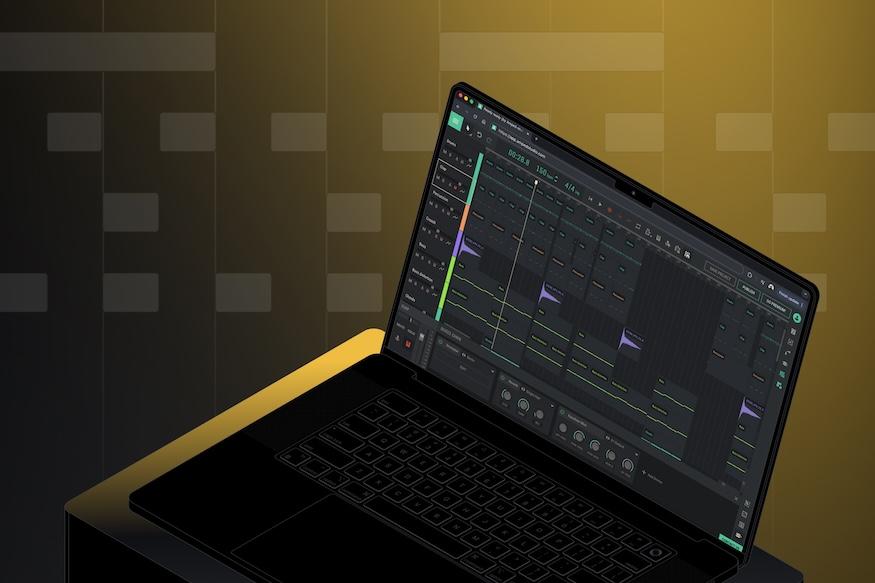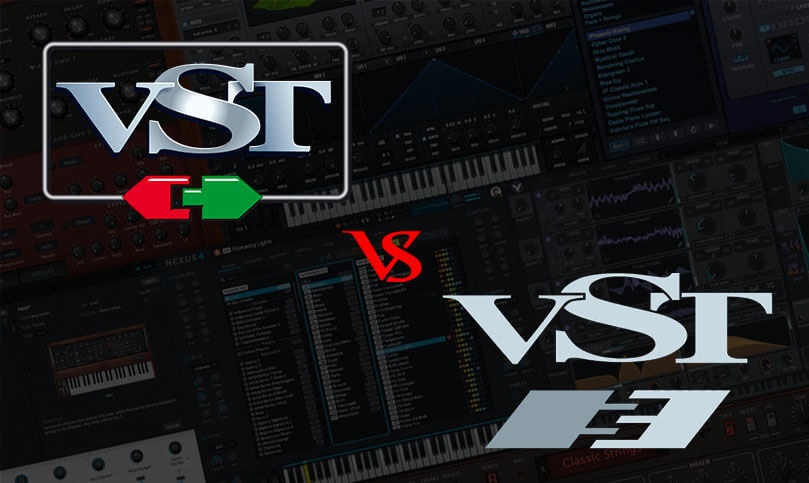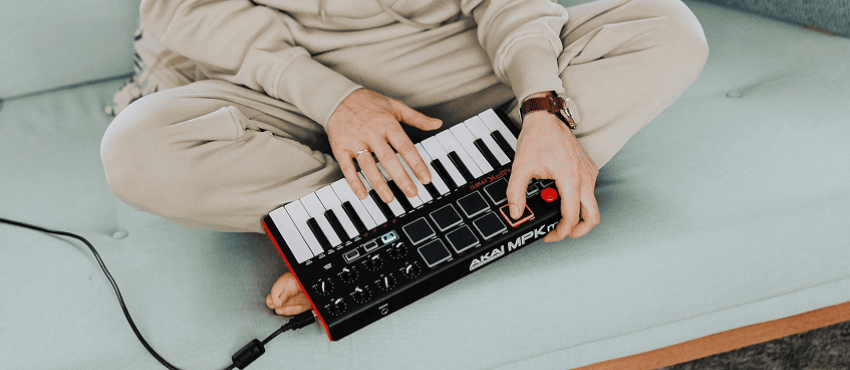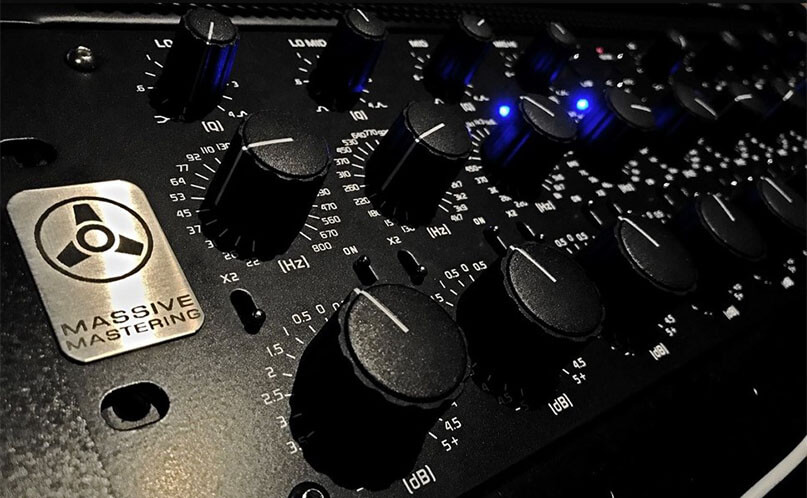What is house music
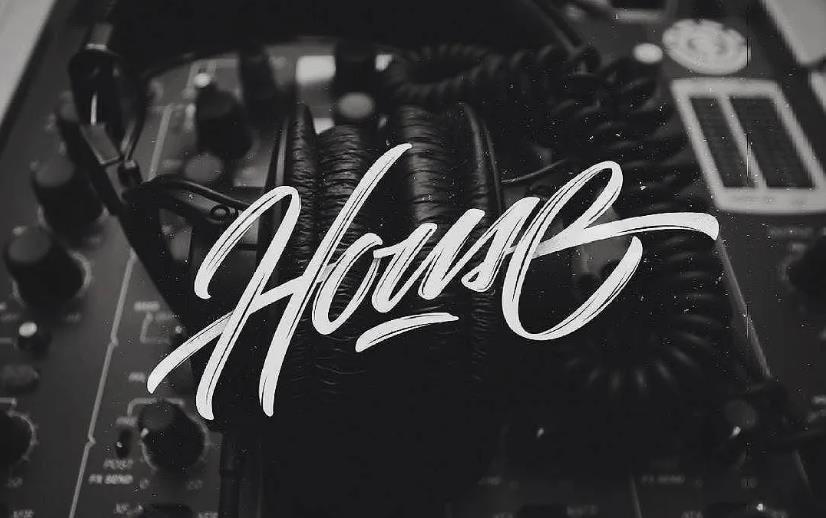
House music is not just a genre, but a cultural phenomenon that originated in the 80s in Chicago and gradually became a global symbol of electronic dance music. This movement had a significant impact on nightclubs and festivals around the world and continues to be one of the most powerful forms of musical expression.
Origins and Development of House Music
The history of house music begins with small Chicago clubs, but soon it began to sound at the largest venues on the planet. In those years, dance floors in New York, Chicago and Detroit were filled with fans of new sounds. In New York, cult venues such as The Garage and The Loft replaced the legendary Studio 54, offering visitors a unique atmosphere of freedom and community.
DJs Larry Levan and David Mancuso began to experiment, mixing different musical styles such as disco, soul, funk, pop and techno. It was in this context that a unique sound was born that became the basis for house music.
Frankie Knuckles: The Founder of House Music
Frankie Knuckles, known as the godfather of house music, was a key figure in the development of the genre. His work at the Warehouse in Chicago, where he created unique dance tracks, led to the formation of a new musical movement. Clubgoers were the first to appreciate this new sound, which soon began to gain popularity around the world.
Evolution: Acid House and the Explosion of Popularity in the UK
The summer of 1988 was a turning point for house music in the UK. A group of friends, inspired by the sound of acid house, discovered the style in Ibiza and brought it to London. This led to the emergence of huge illegal raves that were held in warehouses and fields across the country.
Famous DJs such as Danny Rampling, Nicky Holloway and Pete Tong became pioneers of this movement and achieved international success. By 1989, British producers began creating their own tracks, bringing new elements to house music.
House Music in the 90s: Rise and Popularization
During the 90s, house music remained a popular underground genre, but certain artists such as Black Box, C&C Music Factory, Haddaway, Amber and Crystal Waters took it to the international stage, making it a staple on all major dance floors.
The Birth of Rave and the Emergence of New Genres
As the 90s and early 2000s progressed, raves began to dominate the underground scene, while house and techno began to evolve, giving rise to new musical directions. In Europe, genres such as trance, led by DJs Paul Van Dyk, Tiesto and Armin Van Buuren, became global phenomena.
During this same period, breakbeats also gained popularity, represented by artists such as Fatboy Slim, The Prodigy and The Chemical Brothers. Along with this, drum & bass, garage, hardcore techno, gabber, electro and other genres developed, emerging from the underground and gaining international recognition in the 2000s and later. House music not only remains relevant, but also continues to influence the development of electronic music, remaining a symbol of creativity and musical freedom.
French House and its Global Success
For many years, house music was an integral part of the European club scene. In the 90s, the genre began to gain popularity again in the United States, and against this backdrop, French house emerged, which soon gained worldwide fame. Bands like Daft Punk became the leaders of the movement, occupying dance floors with their bright and catchy melodies. At the same time, artists like Armand Van Helden, Stardust and Cassius also created hit dance tracks that became favorites among a wide audience.
The evolution of the genre: progressive, tech and minimal
While French house was filled with bright disco hooks and funky rhythms, other DJs in the early 2000s went in a new direction. They created deeper, minimalist compositions that gained popularity in clubs around the world. DJs like Danny Tenaglia, Deep Dish, Sasha, and Digweed were at the forefront of this new wave, hosting all-night marathons that lasted 10-12 hours and attracted huge followings.
The Rise of House in the 2000s
While Daft Punk had already achieved massive success in the late 90s, house music’s global popularity didn’t reach its peak until the mid-2000s. During this time, American music festival promoters and organizers began to actively promote house music, inviting stars like David Guetta, Swedish House Mafia, and Avicii to their events. This new, big-venue-oriented sound became the foundation of the EDM we hear today.
By 2010, house music had firmly established itself in the mainstream, with many pop artists incorporating house elements into their compositions. Today, house remains one of the most popular genres of electronic music, continuing to delight millions of people around the world. Over time, the genre has integrated elements of hip-hop, techno and trance, which has allowed it to remain relevant and modern.
Elements of House Music
- 4/4 Rhythm: The foundation of any house track is the four-on-the-floor rhythm, which provides a clear and stable rhythm that is easily recognizable and ideal for dancing;
- Bassline: A deep, powerful bass is the foundation of house music, creating the basis for the entire track and setting a pulsating rhythm;
- Synthesizers: Synthesizers play a key role in creating melodic elements, adding the characteristic sound and atmosphere inherent to the house genre;
- Samples: Often used to add uniqueness and recognizability to a track. Often, elements from disco or funk compositions are sampled, which gives the music a retro flavor;
- Vocals: Vocal parts add emotional depth and human warmth to a track. This can be either singing or simply spoken words, but always making its own special contribution to the sound;
- Percussion: Various percussion elements such as claps, clicks or drum machine sounds add texture and layering to a track, making it more rich and interesting for the listener.
Influence on Modern Music
House music has had a significant impact on the development of modern music, particularly in genres such as EDM, hip-hop, and pop. Many modern artists have incorporated elements of the house sound into their compositions, such as the four-on-the-floor rhythm, powerful basslines, and synthesized or sampled sounds. The genre has not only changed musical structure, but has also influenced production approaches, popularizing looping and sampling techniques that have become integral to modern music production.
Top House Music Artists
Frankie Knuckles
Widely considered one of the founders of house music, Frankie Knuckles has been a true innovator in the world of electronic music. Early in his career as a DJ, he shaped the New York club scene, working alongside the legendary Larry Levan at iconic venues like The Continental Baths and Gallery.
However, it wasn’t until the late 1970s that Frankie began to perfect his unique sound at Chicago’s The Warehouse. There, he masterfully mixed rare disco tracks, European synths, and other unusual compositions to create an atmosphere for the club’s exclusive LGBTQ+ audience.
The Warehouse’s sound quickly gained popularity in Chicago, and then began to spread to clubs in New York and Detroit, giving birth to the genre of house music that would eventually become the global phenomenon we enjoy today.
Marshall Jefferson
Marshall Jefferson, whose contributions to music cannot be overstated, played a key role in shaping the sound of house music. If you’ve ever danced to a pulsating piano riff at a party, there’s a good chance that the inspiration for that track was drawn from his iconic 1986 single “Move Your Body.” With its mesmerizing piano chords and haunting vocals, the track became a dancefloor anthem.
Since the release of “Move Your Body,” piano riffs have become a staple of many house producers’ tracks, spreading Jefferson’s influence throughout the genre. Hailing from Chicago, he left his mark on the development of house music in the late 1980s and was instrumental in its spread beyond the United States. One of the highlights of his career was his 1987 UK tour with Frankie Knuckles, which played a significant role in popularising house music in Europe. Thanks to the efforts of Jefferson and Knuckles, acid house quickly won the hearts of European listeners and became an integral part of club culture.
Pete Tong
Without Pete Tong’s contribution, house music might have remained a niche genre, but thanks to his passion and efforts, it has gained global recognition. Having started out in the 1980s during the acid house craze, Pete Tong has steadily become one of the most influential radio presenters in the dance music world.
While at BBC Radio 1, he launched the legendary The Essential Selection, which quickly gained popularity thanks to its weekly episodes filled with unique mixes from leading DJs from around the world. The show became a platform for discovery and innovation, with each broadcast surprising listeners with original sets and outstanding performances.
Over the years, The Essential Mix has grown into a cult show, launching DJs such as Tiesto, Daft Punk, Sasha and Paul Van Dyk onto the global stage and gaining recognition. Pete Tong’s contribution to the advancement of house music and the electronic scene in general cannot be overstated.
Daft Punk
Daft Punk were one of the main innovators of French house in the early 2000s, paving the way for the genre to hit the global stage. With their innovative approach to music, they quickly became one of the most famous groups in music, collaborating with stars such as Kanye West, Missy Elliott and The Weeknd.
Their debut album, Homework, was a sensation, instantly changing the direction of house music. Daft Punk’s French house combined the funk elements of Chicago house with the repetitive, mechanical motifs of Detroit techno, seasoned with a pop aesthetic. This unique mix was a real breakthrough, winning the hearts of listeners around the world.
Although the duo released a new album in 2013, a few years later they announced that they were ending their collaboration, which was a real blow to house music fans. However, this decision was inevitable for a group that made such a significant contribution to the development of the genre and left an indelible mark on musical history.
David Guetta
David Guetta is rightfully considered one of the key figures in the world of house music. His contribution to popularizing the genre among a mass audience is difficult to overstate, and his production approach has had a significant impact on the evolution of the sound in house music. Guetta skillfully combines elements of pop and hip-hop with traditional house sounds, creating fresh and energetic tracks that have gained international recognition. The peculiarity of his style lies in the use of memorable vocal samples, powerful bass lines and rich synth melodies, which forms a unique sound, instantly recognizable as “Getta house”. This approach has not only changed the perception of house music, but also influenced the way many DJs build their sets, incorporating elements of hip-hop, pop and rock to create something truly innovative and exciting for listeners.
Calvin Harris
Calvin Harris has had a significant impact on the development of house music, helping to bring it to a wider audience by creating a more accessible and commercially successful sound. His ability to create memorable melodies and addictive rhythms has made him one of the most recognizable figures in the world of electronic music. Collaborations with artists such as Rihanna and Florence + The Machine have solidified his position as one of the leading producers and DJs, helping him create hits that not only conquered the charts, but also influenced musical trends. Harris’ influence is so great that many modern musicians cite him as an inspiration, trying to emulate his mastery of creating memorable and dynamic tracks.
Avicii
Avicii has had a huge impact on house music, being one of the key producers who popularized the genre and brought it to the mainstream. His work was a unique combination of traditional house music with elements of pop, rock, and EDM, creating a unique sound that was both accessible to a wide audience while still retaining its danceable energy.
His hits such as “Wake Me Up,” “Levels,” and “Hey Brother” not only gained immense popularity, but also shaped the sound of modern house music, becoming the soundtracks of an entire generation. Avicii’s influence continues to be felt in the work of many modern producers who are inspired by his approach to music making and strive to continue his legacy by combining different genres and creating melodies that resonate with listeners around the world.
House Music Subgenres
Deep House
Deep House is a subgenre of house music that emerged in the 1980s, which is a synthesis of elements of Chicago house, jazz-funk and soul music. The tempo of compositions in this genre usually ranges from 110 to 125 BPM, and the characteristic sound is achieved through the use of chord progressions, atmospheric synthesizers and a deep bass line. Deep House is characterized by sophisticated vocals, a soulful sound and a relaxed atmosphere, which organically combines elements of soul, jazz and funk.
Tech House
Tech House is a hybrid subgenre of house music that combines elements of techno and house. Emerging in the early 1990s in the UK and Germany, Tech House quickly became popular on the world scene. The genre is characterized by a minimalist approach to arrangement, the use of complex rhythms and electronic instruments. Often the tracks feature a four-on-the-floor rhythm, and Tech House has an energetic, driving character that creates a bridge between techno and house.
Tribal House
Tribal House is a subgenre of house music that emerged in the early 1990s, characterised by the use of ethnic rhythms and percussion instruments from African and Latin American cultures. Often combined with elements of techno and trance, the style creates a unique sound. Tribal House is associated with the underground scene and rave culture, making it particularly appealing to those looking for more experimental and atmospheric tracks.
Disco House
Disco House is a subgenre of house music that combines elements of disco, funk and soul with modern house rhythms. The style is characterised by the use of samples from classic disco tracks, deep basslines and syncopated rhythms. Disco House is popular in underground dance music and is often played at nightclubs and festivals, bringing a retro feel to house music.
Progressive House
Progressive House is a subgenre of electronic dance music that emerged in the late 1980s and early 1990s. The style is characterized by melodicism, complex chord progressions, and long breakdowns, which gives the music an epic and emotionally intense feel. Progressive House often mixes elements of trance, techno, and even classical music, making it a bridge between house and trance. Notable artists of the genre, such as Sasha, John Digweed, and Eric Prydz, have had a significant influence on its development.
Acid House
Acid House is a subgenre of house music that emerged in the mid-1980s and is characterized by the use of the Roland TB-303 bass synthesizer, which creates a distinctive acidic sound. The genre was pioneered by DJs such as Phuture, DJ Pierre, and Larry Heard. Acid House is known for its repetitive basslines and melodic phrases, and has played an important role in the formation of other electronic music genres such as techno and trance.
Minimal House
Minimal House is a subgenre of house music that emerged in the early 2000s, characterized by a minimalist approach to arrangement. The genre often uses simple melodies, minimal percussion, and repetitive rhythms. Minimal House has a slower tempo (120 to 125 BPM) than traditional house music and is characterized by deep basslines and hypnotic grooves. The style is influenced by Techno and Dub, making it popular in the underground scene.
Electro House
Electro House is a subgenre of electronic dance music that combines elements of electro, house, and techno. Emerging in the early 2000s in the United States and Europe, the genre quickly gained popularity. Electro House is characterized by the use of synthesizers, drum machines, and heavy basslines, creating a high-energy and distorted sound. Artists such as Deadmau5, Skrillex, and Zedd have become known for their work in this style.
Funky House
Funky House is a subgenre of house music that combines elements of funk, soul, and disco to create a vibrant, energetic sound. The style uses samples from classic funk and soul records, heavy bass, and funky percussion. Funky House is popular on dance floors and can often be heard in clubs and festivals.
Jackin House
Jackin House is a subgenre of house music that heavily borrows elements from disco, funk, and soul. The style is characterized by energetic, danceable grooves and the use of samples from classic disco and funk records. Jackin House is popular in clubs and is often used by DJs to create remixes and mashups, bringing elements of hip-hop and rap to house music.
House Music Today
Today, house music remains an integral part of global music culture. Although it is no longer played on radio stations as often as it was in the late 2000s and early 2010s, house’s influence on the music industry has not waned. The genre continues to evolve, adapting to new trends and bringing fresh ideas to its sound. Artists and sounds may change, but house remains dynamic and relevant, continuing to inspire people on dance floors around the world.
For almost half a century, house music has made people move to the beat of its rhythms. From its origins in small clubs in Chicago to its global spread, house has become more than just a musical genre, but a cultural phenomenon that has united millions of people. It is the soundtrack for an entire community, where everyone can find their place and express themselves through music and dance.



